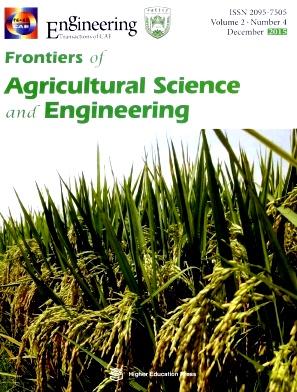聚集体内的微生物坏死团稳定了自然保护c对农田管理的反应
IF 2.8
4区 农林科学
Q1 AGRONOMY
引用次数: 1
摘要
土壤微生物与土壤结构的相互作用调节着土壤有机碳(SOC)的降解和稳定过程。微生物坏死团块是有机碳的持久组成部分,其积累的大小取决于管理和聚集大小。对121个成对测量值进行了荟萃分析,以评估微生物坏死块对SOC的贡献的管理效果,这取决于聚集分数。结果表明,真菌坏死团对土壤有机碳的贡献随团聚体大小的增加而增加,而细菌坏死团在粉土和粘土中所占比例较高。农田管理增加了大团聚体(47.1%和45.6%)、小团聚体(44.0%和44.2%)和微团聚体(38.9%和37.6%)的总坏死团和真菌坏死团。农田管理增加了独立的细菌坏死块本文章由计算机程序翻译,如有差异,请以英文原文为准。
MICROBIAL NECROMASS WITHIN AGGREGATES STABILIZES PHYSICALLY-PROTECTED C RESPONSE TO CROPLAND MANAGEMENT
ABSTRACT The interactions of soil microorganisms and structure regulate the degradation and stabilization processes of soil organic carbon (SOC). Microbial necromass is a persistent component of SOC, and its magnitude of accumulation dependent on management and aggregate sizes. A meta-analysis of 121 paired measurements was conducted to evaluate the management effects on contributions of microbial necromass to SOC depending on aggregate fractions. Results showed that the contribution of fungal necromass to SOC increased with aggregate sizes, while bacterial necromass had a higher proportion in silt and clay. Cropland management increased total and fungal necromass in large macroaggregates (47.1% and 45.6%), small macroaggregates (44.0% and 44.2%), and microaggregates (38.9% and 37.6%). Cropland management increased bacterial necromass independent of
求助全文
通过发布文献求助,成功后即可免费获取论文全文。
去求助
来源期刊
CiteScore
5.10
自引率
2.70%
发文量
33
期刊介绍:
Frontiers of Agricultural Science and Engineering (FASE) is an international journal for research on agricultural science and engineering. The journal’s aim is to report advanced and innovative scientific proceedings in agricultural field including Crop Science, Agricultural Biotechnology, Horticulture, Plant Protection, Agricultural Engineering, Forestry Engineering, Agricultural Resources, Animal Husbandry and Veterinary Medicine, Applied Ecology, Forestry and Fisheries. FASE is committed to provide a high level scientific and professional forum for researchers worldwide to publish their original findings and to utilize these novel findings to benefit the society.

 求助内容:
求助内容: 应助结果提醒方式:
应助结果提醒方式:


